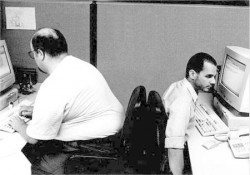 I have recently noticed that I devote a considerable amount of blog inches to the notion of community and how important it is to Lemon Studios and the wider coworking landscape. Subsequently, I thought this post might be a good opportunity to reflect the thoughts of the Lemon community and others in our network in order to highlight how coworking spaces differ to more traditional offices – and to try to discover those frustrating, niggling and downright irritating aspects of office life those in coworking spaces are glad to have left behind.
I have recently noticed that I devote a considerable amount of blog inches to the notion of community and how important it is to Lemon Studios and the wider coworking landscape. Subsequently, I thought this post might be a good opportunity to reflect the thoughts of the Lemon community and others in our network in order to highlight how coworking spaces differ to more traditional offices – and to try to discover those frustrating, niggling and downright irritating aspects of office life those in coworking spaces are glad to have left behind.
1. Physical restrictions
For our followers who replied on Twitter and those we spoke to directly, there are many physically restrictive aspects of working in old office spaces which were the subject of some disdain. These ranged from building design to dress codes, but the most significant seemed to have an impact beyond individual frustrations toward the creative and productive wellbeing of the entire team. The abundance of walls and partitioned cocoon-like box rooms were not remembered favourably, and even less so now that the world-without-walls (open-plan offices, flexible working hours, increased connectivity) seems so natural.
2. Bureaucracy
Following nicely from the physical restrictions detailed in point 1, bureaucracy is in one sense an obligatory aspect of our office-working past that we are all quick to leave behind when we move into co-working. Initially, I was somewhat taken aback by the suggestion – perhaps because I had underestimated just how universal problem admin and routine was for pre-coworking folks. That said, many co-working spaces (as suggested by @STLCoworking in the US) now pride themselves on their lack of ‘red tape’ and the abolishment of ‘ill-fitted superiors.’
3. Not going outside
Not all the aspects put forward to us related to traditional spaces of the lifeless office-block variety. As those of us who have ever worked fulltime from home are aware, walking up the stairs, down the hall, or even just a few feet to your workspace may well be the height of convenience at 8:55am, but it can make for quite a lonely and hermit-like experience. @milestinsley is one person that appreciates the morale-boosting goodness that a brisk commute to the office can bring in the morning – even if it just ensures another day hasn’t slipped by without seeing natural light.
4. Lack of space
Similarly, others who were already freelance or embarking on an entrepreneurial venture were also quick to highlight the lack of possibility for expansion in their home offices and small rental spaces. Another Twitter-user, @indejames, identifies the freedom of a large office which comes when moving into a coworking space. This gives individuals the opportunity to establish themselves at a location with piece of mind that their team can grow naturally as and when it needs to, without having to move premises.
5. Absence of entrepreneurial spirit
Although many of the responses related to aspects that may be visually noticeable during even a short visit to a coworking space after working in a more traditional office, some were keen to note more hidden differences which might only emerge after a number of months. One individual we spoke to directly cited a distinct lack of entrepreneurial spirit in the office he used to work in, where employees were keen to keep their heads down and stick to the rigid order of the company. Of course, this differs significantly to the energy and enthusiasm he has found after moving into a coworking space. And he didn’t miss that lack of entrepreneurial spirit one bit.
Comments welcome. What do you really NOT miss about your old non-coworking office?

 We are always pleased to welcome a new addition to the community here at Lemon Studios, and if a new expansion ties in with the launch of a new product or site the arrival is even more exciting. So, let us welcome
We are always pleased to welcome a new addition to the community here at Lemon Studios, and if a new expansion ties in with the launch of a new product or site the arrival is even more exciting. So, let us welcome  After spending the last couple of months researching co-working offices and similar spaces in both the US and Germany, I soon began to notice a number similarities between the examples. With this in mind, and what we know of co-working here in the UK, I decided to try to boil down the five most important aspects or “ingredients†that go into a great co-working space today.
After spending the last couple of months researching co-working offices and similar spaces in both the US and Germany, I soon began to notice a number similarities between the examples. With this in mind, and what we know of co-working here in the UK, I decided to try to boil down the five most important aspects or “ingredients†that go into a great co-working space today.
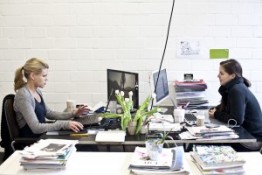 Betahaus
Betahaus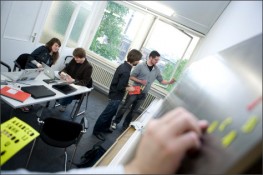
 Hallenprojekt.de
Hallenprojekt.de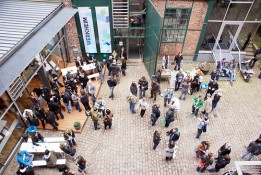 Werkheim
Werkheim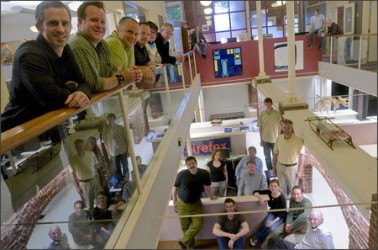
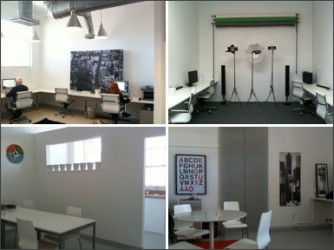
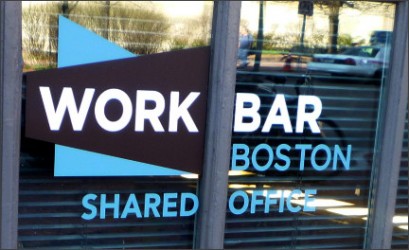 WorkBar
WorkBar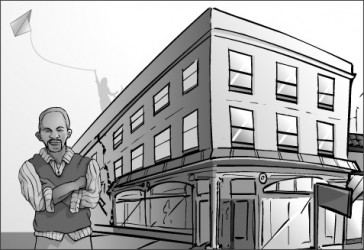
 With kick-off for the Group A match between South Africa and Mexico just hours away, I couldn’t help but cast my mind back to four years ago and ask myself how different the World Cup experience will be since the social media explosion of Facebook and Twitter et al. So how will we engage with the World Cup experience in the online context?
With kick-off for the Group A match between South Africa and Mexico just hours away, I couldn’t help but cast my mind back to four years ago and ask myself how different the World Cup experience will be since the social media explosion of Facebook and Twitter et al. So how will we engage with the World Cup experience in the online context?
 Additionally,
Additionally,  It seems like only yesterday when discussions of tomorrow’s workplace would focus on the fast-learning Y Generation in an age of remote working and a strange world that is always connected. Yet, over the next few years a new crop of graduates will be becoming our colleagues, and will have a different view of the digital age and the workplace that is set to come afterwards.
It seems like only yesterday when discussions of tomorrow’s workplace would focus on the fast-learning Y Generation in an age of remote working and a strange world that is always connected. Yet, over the next few years a new crop of graduates will be becoming our colleagues, and will have a different view of the digital age and the workplace that is set to come afterwards.
